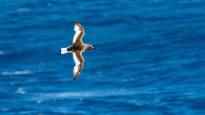According to the Norwegian Polar Institute, the number of nesting ice storm connectors has fluctuated sharply every year, now the situation at the main nesting site seems to have collapsed.
Saana Uosukainen,
Yrjö Kokkonen
Norwegian naturalists were shocked this year to see the nesting area of Thalassoica Antarctica in Antarctica, says Norwegian Broadcasting Corporation NRK (switch to another service).
The nesting area on the slopes of Svarthamaren Mountain near the Norwegian Antarctic Research Center is practically completely empty.
Biologist Joanna Sulich tells the Norwegian Broadcasting Corporation NRK that this has never happened during the investigation.
– Up here we see the nesting places of thousands of nesting puppies. There is no one here now. It’s weird, it’s completely exceptional, Sulich says.
He said a few birds from the community were alive on the mountain slopes when the group arrived in Antarctica. After the snowstorm, they too were found dead.
As late as 1984, the region was washed by 400,000 icebreakers and by 2020 by about 100,000.
Right now, it would be the best nesting time for ice storm mounts and Svarthamaren in the land of Antarctica Queen Maud is the most important nesting site for the species.
According to the Norwegian Polar Institute, the number of nesting birds has fluctuated sharply every year, and now the situation at the main nesting site seems to have collapsed. The Polar Institute has had a bird research project with long and systematic monitoring on the land of Queen Maud.
Researchers speculate that the birds have not been able to withstand the harsh conditions in the area this year because they have not been able to refuel at sea with enough food for nesting.
Food refueling has been inadequate, possibly due to changes caused by climate change or overfishing.
